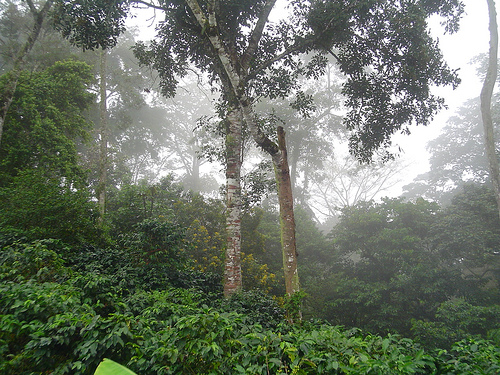Imagine you walk into the neighborhood coffee house for your morning cup of joe, and on the counter is a tip jar with a sign reading, “$ for wintering warblers” with a photo of a Chestnut-sided Warbler in a tropical forest. You’d drop your change in, right? Any proud bird watcher would do their part for the wellbeing of the sprightly warblers that delight us so much come spring.

Shade grown coffee bushes in the cloud forest. Copan Coffee Tour – Finca Santa Isabel, Copan Ruinas, Honduras
It’s not such a stretch of the imagination, York University researcher Bridget Stutchbury told a packed audience at the Cornell Lab’s Monday night seminar series last week. Many of the colorful songbirds that are just now leaving us for the winter, including warblers, tanagers, orioles, and grosbeaks, will spend the next five months in and around shade coffee plantations in Mexico and Central and South America.
But only if the birds can find them. Shade-coffee plantations—particularly ones that grow coffee under a natural forest canopy—are increasingly being deforested, leaving North American migrants with fewer places to spend the winter. The good news, Stutchbury said, is that you can have your dark roast and your songbirds too if you buy sustainable coffee, particularly Bird Friendly coffee.
Read the excellent article by Cornell Lab science editor Gustave Axelson
Photo credit: Adalberto.H.Vega
If you enjoyed this post, please consider leaving a comment and subscribing by RSS feed or via email to have future articles delivered to you.
Discover more from Vermont Birder
Subscribe to get the latest posts sent to your email.
